In 2007, UNESCO named one of the most prominent monuments in India as a World Heritage site. This building has been important in so many ways for Indians for several centuries, and some think that this accreditation has come a little too late in the day! Nevertheless, it is indeed a great source of pride to all India. The monument being discussed is one of the most colorful buildings in the world, and at one time was also one of the richest, but even without all its gems and gold, the building holds a special place in the hearts of all Indians. The monument is none other than the Red Fort.
Here are some interesting facts about Red Fort
1- Red Fort in Delhi was constructed over a period of 10 long years. This is quite natural because the techniques and machines that were used to build were not as advanced as the ones that we see today. Wondering which period was the Red Fort built in? You will be amazed to know that this was built way back in the 1600s! The construction took place during the reign of Emperor Shah Jahan who was also responsible for the construction of the world famous Taj Mahal amongst many other buildings and monuments in India. This great lover of architecture entrusted chief architects Ustad Ahmed and Ustad Hamid with the constructions of the Red Fort whose construction began in 1638 and got completed in 1648.
2- The Red Fort is spread over a wide expanse of 256 acres. This architectural marvel was built in a design that is considered quite exquisite even in today’s age: octagonal. To the person looking at it in front of him, the design of course would not be apparent, but the shape of the building cannot be missed from a bird’s eye view, as the wall that acts as the boundary for the fort is shaped as an octagon.
3- There are three main gates in the Red Fort that can be used as the entry and exit points. The two most famous and important entry gates are known as the Delhi Gate and the Lahore Gate. No need to be surprised or worried here! There is no direct passageway to the Red Fort from Lahore, Pakistan, but the Lahore Gate is so named because when the fort was built, one gate was facing Delhi and the other Lahore, which was then a part of India. The third gate is known as the Yamuna gate because earlier, the river Yamuna flowed in front of the Red Fort. Now, although the course of the river has changed, the name of this exit gate that was normally used by the royals to gain easy access to the river still retains its old charming name.
4- One reason why Red Fort has captured the interest of not just Indians but all the invaders who have plagued us in the history is the amount of wealth that could be found within the fort. Believe it or not, the walls, pillars, doors, and even windows were once studded with precious gems such as diamonds, rubies, and emeralds. As Shah Jahan had decided to move his capital from Agra to Delhi, he had decided to make his new fort as special as possible and thus, he had named the court where he carried out his daily meetings with his council of ministers and governed the entire kingdom as the Diwan-e-Khas, or the Special Hall.
Another example of the magnificence of the fort was the throne on which the emperor sat. It was made out of solid gold completely and was embedded with various jewels, one of which was the Kohinoor Diamond. The diamond, as we all know, was looted by the British and is still in their captivity. The British had ruled India for a while and when they decided to leave it, they plundered much of the wealth that was in India and stripped the Red Fort bare of all its adornments, taking along with them the famous Kohinoor diamond.
- Also Read: Famous Food Places in Delhi
5- The Red Fort was initially white as it was built with limestones. However, with the passage of time, the limestones starting chipping off and as a protective measure, the British decided to paint the whole fort red. The boundary walls surrounding the actual fort are quite high as were constructed in such a way so as to provide maximum protection to the royal houses in the fort. Thus, this was also known as the Lal Quila to the Indians living near it.
One of the reasons why the Red Fort is so well-known and important to all Indians is because since the first Indian Independence Day in 1947, the Prime Minister of the country has been addressing the nation from this very fort after hoisting the national flag with humility and reverence.
How to Get to the Red Fort
One of the stark beauties of the street now known as Chandni Chowk, the Red Fort is easily accessible by train and road. The nearest metro station to the Red Fort is the Chandni Chowk Metro Station of Delhi Metro (Yellow Line). The station is a mere 1KM away from the fort and people can choose to either walk from the station after alighting from the metro, or they can choose from the several autos that will be milling around to transport passengers to the various famous monuments in Delhi.
The light and sound show that takes place every evening at the Red Fort Is spectacular. It is a unanimous suggestion of people who have already seen it to everybody else to never miss this show when they have the opportunity to travel to Delhi. The fort is not only a symbol of the hard work that was put into while building it, out heritage, and artistic culture but it is more importantly a symbol of our strength and pride of achieving independence from the British and overcoming the rule of outsiders.

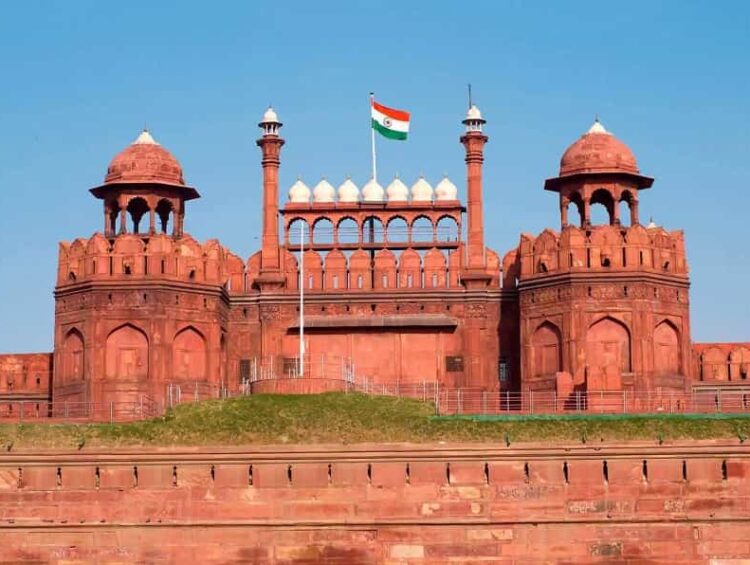
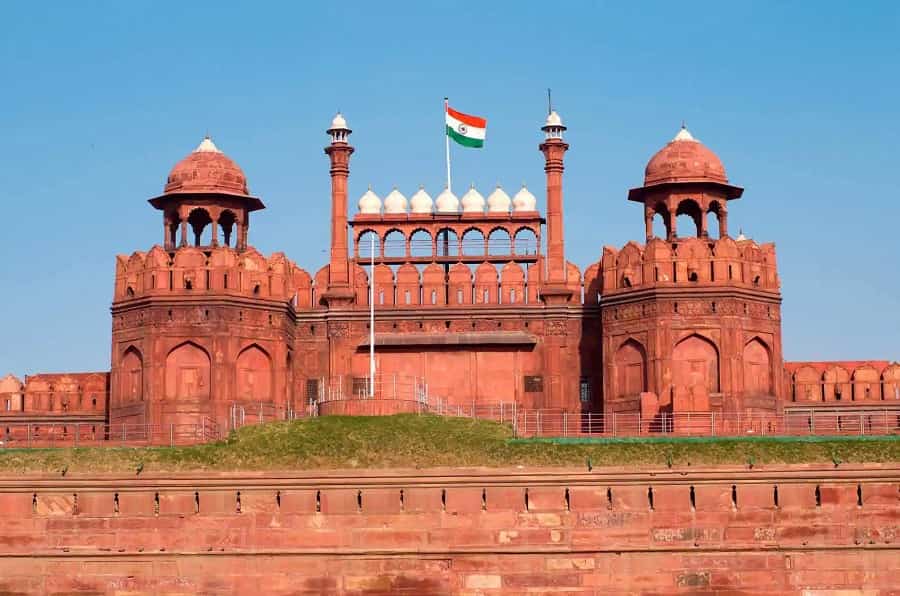
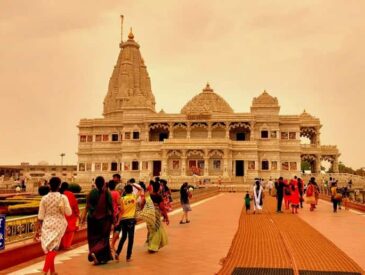
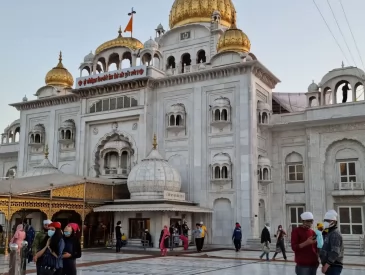
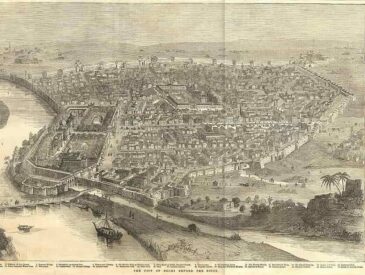
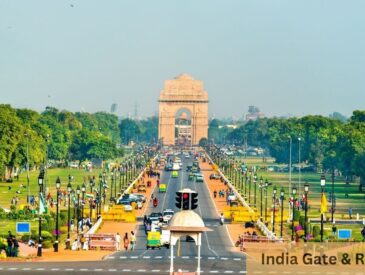
When the fort was built by the Mughal Emperor Shah Jahan in 1648, it was white in colour – built with sandstones. Not only did the name, but the colour of the fort was also changed to red. All of it took place at the behest of the British. The Red Fort was originally made of lime stones.